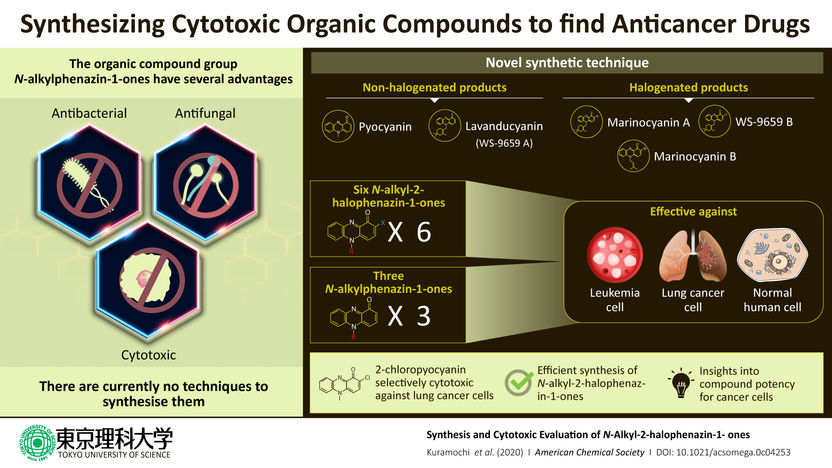Killing cancer naturally: New process to produce compounds with anti-cancer properties
Scientists have uncovered a method of combining natural organic compounds which can create anticancer drugs with minimal side effects
In the past decades, cancer has surpassed many other diseases to become the current second leading cause of death globally, with one in six people dying from it. This concerning position has given it a unique and ubiquitous position in global culture, so much so that finding a cure for cancer is considered one of the most noble things any person can do. Sadly, humanity hasn't arrived at this cure yet; tons of research is being conducted to explore every angle of cancer, trying to find a weakness.

Only time will truly tell if this is the new door opening to the elusive cure for cancer, but this is a sure and definite step in the right direction.
Tokyo University of Science
A group of scientists from the Tokyo University of Science, led by Prof Kouji Kuramochi, has also been dedicated to this mission. In their search for a weapon against cancer, they turned to a specific set of organic compounds called "phenazines." Phenazines are a large group of nitrogen-containing "heterocycles" (or compounds with a ring structure composed of at least two different elements). More than a hundred phenazine compounds are found naturally, and over 6000 can be "synthesized." Of these, N-alkylphenazin-1-ones (phenazinones) are a minor group of phenazines that are known to have antibacterial, antifungal, and cytotoxic activities. Cytotoxicity is an exciting property in cancer research, because, if we can "direct" cytotoxic compounds to work against cancer cells, we can eliminate the cancer.
"Pyocyanin, lavanducyanin, lavanducyanin-derived WS-9659 A, WS-9659 B, and marinocyanins A and B, all different types of phenazines, show cytotoxic activities, against cancer cells. However, these compounds are difficult to derive from their natural sources such as bacteria," reports Prof Kuramochi.
Determined to shed more light on them and harness their properties for good, the scientists experimented with synthesizing these compounds through several methods. They performed "halogenation" (the process of adding halogens like chlorine and bromine) and "oxidative condensation" (or addition of an oxidant and a water molecule) on various compounds.
Their strategy succeeded in the highly efficient and selective synthesis of N-alkyl-2-halophenazin-1-ones. Of all the synthesized compounds, they found that 2-chloropyocyanin exhibited high cytotoxicity toward the lung cancer cells. Their findings published in American Chemical Society Omega, explain the logistics of their study in full technical detail.
Prof Kuramochi believes that their discovery also has a beneficial effect on the living world. "We have established a highly versatile synthetic method that is simple and can be applied to the synthesis of many natural products," he says. Since the oxidative coupling reaction proceeds only with oxygen, it is an environmentally friendly synthetic method."
What's more, this novel technique overcomes one of the main drawbacks of the existing techniques. The traditional chlorination of N-alkylphenazin-1-ones with selectively occurs at the 4-position, meaning that the compounds that form out of that reaction are the undesired N-alkyl-4-chlorophenazin-1-ones. This novel synthesis technique overcomes this issue, and allows, for the first time, the synthetic production of WS-9659 B!
Prof Kuramochi and his team look forward to verifying the effects of phenazinones in animal studies and clinical trials. In the development of anticancer drugs, drugs that have little effect on normal cells and act selectively on cancer cells are ideal drug candidates with few side effects.
These new compounds are more than four times more selectively toxic to cancer cells than normal cells. Only time will truly tell if this is the new door opening to the elusive cure for cancer, but this is a sure and definite step in the right direction.


















































